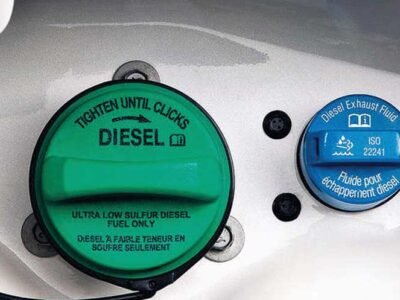When it comes to long-term car storage, taking the right precautions is essential to preserve your vehicle’s condition and ensure it remains in top shape. Whether you’re going on an extended vacation, deploying overseas, or need to store your car for an extended period, following the best practices in this blog will help you prevent potential damage and maintain the overall performance of your vehicle.
Inflate the Tires
Inflating the tires properly before storing your vehicle is crucial for maintaining their condition and preventing flat spots. When a car sits for an extended period, the vehicle’s weight can cause the tires to develop flat spots, leading to uneven wear and compromising performance. To avoid this, inflate the tires to the recommended pressure level specified by the manufacturer. It is advisable to slightly over-inflate the tires to compensate for any air loss during storage.
However, be cautious to stay within the maximum pressure limit.
Additionally, consider using tire cradles or jack stands to alleviate pressure on the tires. It helps distribute the weight evenly and further prevents flat spots. Regularly inspect the tires for any signs of damage or cracks; replace them before storage.
Use a Car Cover
A car cover protects against dust, dirt, moisture, and other environmental elements that can damage your vehicle’s exterior. It acts as a shield, preserving the paintwork, preventing fading, and reducing the risk of scratches or dings.
When selecting a car cover, choose one made from breathable and waterproof material. It allows air circulation while keeping moisture out, preventing mold or mildew formation. Ensure the cover fits your vehicle correctly, providing full coverage and a snug fit.
Before covering your car, cleaning it thoroughly to remove any dirt or debris that could scratch the surface is essential. Additionally, avoid using a car cover on a wet or dirty vehicle, as it can trap moisture and cause damage. Remember to periodically remove the cover and inspect your car for any signs of moisture buildup or damage.
Protect Against Pests
Protecting your vehicle against pests is crucial to prevent damage to the interior and wiring. Pests such as rodents and insects can enter your vehicle and wreak havoc, causing chewed wires, nests, and unpleasant odors. To safeguard your car, taking a few preventive measures is vital.
Start by thoroughly inspecting your vehicle and sealing potential entry points, such as gaps around doors, windows, or vents, using weatherstripping or silicone caulk. Additionally, place pest repellents inside and around your vehicle, such as mothballs, dryer sheets, or essential oils like peppermint or cedar, as these scents deter pests from entering.
It is also essential to clean your vehicle thoroughly, removing any food debris or crumbs that may attract pests. Avoid leaving snacks or perishable items in the car during storage. Lastly, consider elevating the vehicle by using jack stands or placing it on blocks to make it less accessible to pests.
Clean and Wash the Car
Start by thoroughly cleaning the exterior of your vehicle, removing dirt, dust, and other contaminants that can corrode the paintwork over time. Additionally, apply a protective layer of wax or polish to create a barrier against moisture, UV rays, and environmental factors that can cause fading or deterioration. For the interior, you can vacuum the carpets and seats to remove dirt and debris and wipe down surfaces with appropriate cleaners to prevent stains and odors.
Inspect the engine bay for debris or nests and clean it gently to avoid damage to engine components. Lastly, wash the tires and wheels to remove brake dust and grime, preventing corrosion and damage.
Change the Oil and Other Fluids
As time passes, fluids like oil can accumulate contaminants or degrade, posing a potential risk if left unchanged. To mitigate these concerns, you can change the oil by replacing the engine oil and oil filter. This process eliminates old oil, which may harbor harmful particles that can corrode the engine and impede proper lubrication. Fresh oil safeguards the engine during the storage period.
Next, check and refill other vital fluids such as coolant, transmission, brake, and power steering. Ensuring these fluids are at the recommended levels helps prevent potential problems from arising while the car is in storage. Moreover, add a fuel stabilizer to the gas tank to counteract fuel deterioration and prevent fuel system issues. This step becomes especially significant when storing the vehicle for an extended period.
After changing the fluids, run the engine for a few minutes to allow the new oil and fluids to circulate throughout the components, ensuring proper distribution and coverage.
Maintain Proper Insurance Coverage
Even though your vehicle may not be actively driven during this period, it can still be exposed to risks such as theft, fire, vandalism, or damage from natural disasters. To ensure adequate protection, you should verify that your insurance policy includes comprehensive coverage. This type of coverage safeguards your vehicle against non-collision-related risks, offering financial protection for any unexpected incidents. Additionally, inquire with your insurance provider about storage-specific policies.
Preserve Your Vehicle’s Condition With Our Tips
Implementing the best practices for long-term car storage mentioned above will help preserve your vehicle’s condition and ensure it remains in top shape. From adequately inflating the tires to maintaining proper insurance coverage, these measures will reduce the risk of damage and maintain the performance and value of your vehicle.
By taking these steps, you can know that your car will be well-preserved and ready for the road when the storage period ends.












